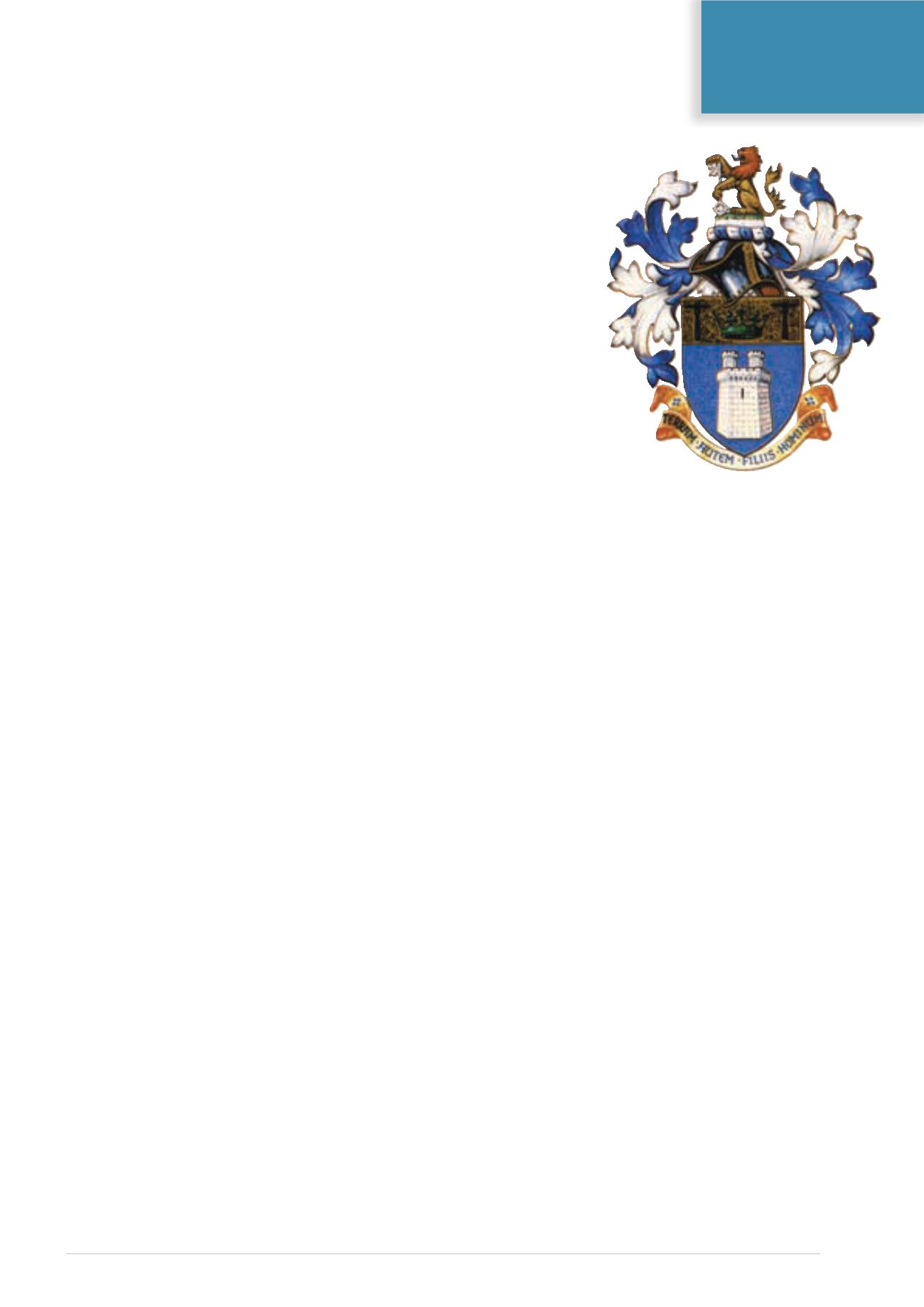
January - February 2014
MODERN QUARRYING
25
In 1937, following a proposal from the West of
England branch, a committee was formed under
General GM Jackson to consider the question of the
Institute applying for a Royal Charter. The following
year new bye-laws were drafted in preparation for
the forthcoming petition; however, war broke out
before this could be presented to the Privy Council.
During the war all branch activities ceased but
Council meetings were still held regularly.
In 1943 a sub-committee was elected to draft
the syllabus for the Institute’s first examination. This
was duly developed and in 1948 the Preliminary
Examinations , as they were called, were held cov-
ering the following subjects:
Electrical engineering;
Quarry operations;
Quarry engineering; and
Surveying and geology.
From these the syllabus for the Associate
Membership Examination was developed. The
equivalent is now called the Institute’s Professional
Examination. As teaching facilities did not exist
until much later, the course was one of private study
with the aid of textbooks lent by headquarters.
Unfortunately, all this educational effort was
not sufficient to impress the Privy Council who
refused the Institute’s application for Royal Charter,
on the grounds that an insufficient proportion of
the corporate members were qualified to degree
level. Following this it was felt that the time had
come for the Institute to put its house in order by
forming itself into a limited liability company, as
up to this time it had been governed by trustees.
Accordingly, the lengthy legal process was set in
motion.
In 1947 Simon McPherson’s son John was
engaged as assistant secretary and in the same
year the designatory letters MIQ, FIQ etc were
adopted.
The first meeting of the Australian branch
was held in Sydney in September 1948 with Mr H
Griffiths in the chair. In the early years the devel-
opment was slow until meetings were established
on a more regular basis around 1953. Thirteen
years later the branch was formed into a Division
with branches in New South Wales, Victoria, South
Australia and Queensland.
Institute Coat of Arms
The familiar Institute Coat of Arms was also adopted
in 1958. It was presented as a gift from the outgo-
ing President, Hugh Symington. Designed at the
Royal College of Arms in London, these armorial
bearings are meant to symbolise the origin, aims
and scope of the Institute. The jads or hammers
represent the ancient tools of the trade and the
coronet between them is composed of wattle flow-
ers to represent the division in Australia, and the
trefoil for Wales. On top is a quarry face with
green-topped overburden surmounted by
a lion to represent the Scottish branch;
in its paws is the key symbolising
knowledge and freedom.
The latin
Terram Autem Filiis
Hominum
means ‘the earth he hath
given to the children of men’. This
was taken from Psalm 115 and
was chosen from a number of sug-
gestions received as a result of a
competition in the journal to find a
suitable motto for the Institute.
The octagonal stone tower with
two turrets represents the castle at
Caernarvon, the Institute’s birthplace. This
castle was built by Edward I with work com-
mencing in 1283 under the supervision of James
of St George, the master mason and military engi-
neer. He was responsible for the selection and
extraction of the stone which was needed in large
quantities as the walls are 7,0‑90’ thick. He was
certainly a good judge of stone because, instead
of using the local material, he had a high-quality
granite shipped across the Menai Straits from the
Isle of Anglesey.
Thus it could be said that one of the world’s
first great quarrymasters inadvertently had a hand
in designing the Institute’s crest.
Michael Farley was the first divisional President.
One of the early members of the branch, Harold
Wenham Robinson, became the first International
President from outside of the UK when he was
elected to that office in 1969. Steady growth was
maintained throughout the 1960s and 1970s and
by then the division had nine branches and some
1 200 members.
1955 saw the first of the Short Courses in
Quarrying Practice which was held at Ashorne
Hill, the conference centre of the Iron and Steel
Corporation. It proved to be a great success, and
the course, which now takes place at Nottingham
University, has been a regular feature of the
Institute calendar in the UK ever since.
Towards the end of 1957 the Institute’s founder
and guiding spirit Simon McPherson, died at the
age of 80, still in office. He was succeeded as
Secretary by his son John in 1958. In that year,
the long-awaited incorporation took place. The
Institute became a company limited by guarantee
with a special dispensation from the Board of Trade
to drop the word Limited from its title. New bye-
laws were adopted requiring every applicant for
corporate membership born from 1918 onwards
to be qualified by examination. The Institute today
enjoys the same legal status but has the addi-
tional benefit of being registered as a charity, the
main advantage of which is the exemption from
INTERNATIONAL
INSTITUTE FOCUS


